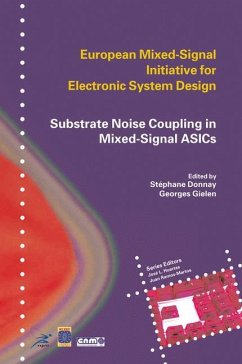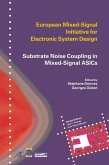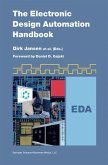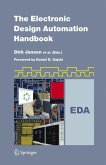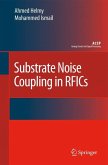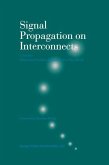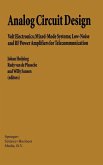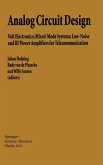The purpose of Substrate Noise Coupling in Mixed-Signal ASICs is to provide an overview of very recent research results in the field of substrate noise analysis and reduction techniques. Much of the reported work has been established as part of the Mixed-Signal Initiative of the European Union. It is a representative sampling of the current state of the art in this area. All the different aspects of the substrate noise coupling problem are covered. Some chapters describe techniques to model and reduce the digital switching noise injected in the substrate. Other chapters describe methods to analyse the propagation of the noise from the source (the digital circuitry) to the reception point (the embedded analog circuitry) through the substrate considered as a resistive/capacitive mesh. Finally, the remaining chapters describe techniques to model and especially to reduce the impact of substrate noise on the analog side. This is illustrated with several practical design examples and measurement results.
This book is the first in a series of three dedicated to advanced topics in Mixed-Signal IC design methodologies. It is one of the results achieved by the Mixed-Signal Design Cluster, an initiative launched in 1998 as part of the TARDIS project, funded by the European Commission within the ESPRIT-IV Framework. This initiative aims to promote the development of new design and test methodologies for Mixed-Signal ICs, and to accelerate their adoption by industrial users. As Microelectronics evolves, Mixed-Signal techniques are gaining a significant importance due to the wide spread of applications where an analog front-end is needed to drive a complex digital-processing subsystem. In this sense, Analog and Mixed-Signal circuits are recognized as a bottleneck for the market acceptance of Systems-On-Chip, because of the inherent difficulties involved in the design and test of these circuits. Specially, problems arising from the use of a common substrate for analog and digital components are a main limiting factor. The Mixed-Signal Cluster has been formed by a group of 11 Research and Development projects, plus a specific action to promote the dissemination of design methodologies, techniques, and supporting tools developed within the Cluster projects. The whole action, ending in July 2002, has been assigned an overall budget of more than 8 million EURO.
This book is the first in a series of three dedicated to advanced topics in Mixed-Signal IC design methodologies. It is one of the results achieved by the Mixed-Signal Design Cluster, an initiative launched in 1998 as part of the TARDIS project, funded by the European Commission within the ESPRIT-IV Framework. This initiative aims to promote the development of new design and test methodologies for Mixed-Signal ICs, and to accelerate their adoption by industrial users. As Microelectronics evolves, Mixed-Signal techniques are gaining a significant importance due to the wide spread of applications where an analog front-end is needed to drive a complex digital-processing subsystem. In this sense, Analog and Mixed-Signal circuits are recognized as a bottleneck for the market acceptance of Systems-On-Chip, because of the inherent difficulties involved in the design and test of these circuits. Specially, problems arising from the use of a common substrate for analog and digital components are a main limiting factor. The Mixed-Signal Cluster has been formed by a group of 11 Research and Development projects, plus a specific action to promote the dissemination of design methodologies, techniques, and supporting tools developed within the Cluster projects. The whole action, ending in July 2002, has been assigned an overall budget of more than 8 million EURO.
From the reviews:
"This book covers modeling and simulation for the noise from substrate. This book reviews the causes of noise in substrate and possible prevention of the noise. ... As a practicing engineer, I feel that their techniques for noise prevention are legitimate and applicable. This book is worthwhile for IC design engineers. Those engineers that work on integration of analog and digital parts may want to read this book to prevent any malfunctioning ICs." (IEEE Circuits & Devices Magazine, Vol. 20 (5), September/October, 2004)
"This book covers modeling and simulation for the noise from substrate. This book reviews the causes of noise in substrate and possible prevention of the noise. ... As a practicing engineer, I feel that their techniques for noise prevention are legitimate and applicable. This book is worthwhile for IC design engineers. Those engineers that work on integration of analog and digital parts may want to read this book to prevent any malfunctioning ICs." (IEEE Circuits & Devices Magazine, Vol. 20 (5), September/October, 2004)

